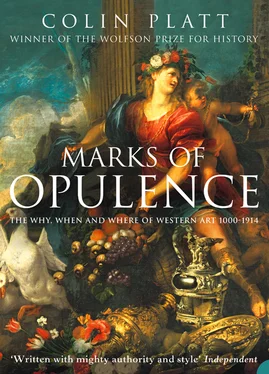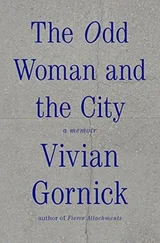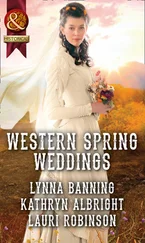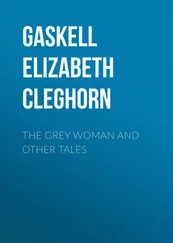It was the same merging of traditions in the sculptures of the Pisani (Nicola and Giovanni) and in the paintings of Duccio and Giotto, Simone Martini and Lorenzetti, which first breathed life into the Italian Renaissance. Nicola Pisano ( fl. 1259–78) was an Apulian. And it was probably his familiarity with the Roman-derived work of the artists of Frederick’s Court that enabled him to bring a new understanding of classical sculpture to his adopted city, using it to good effect in the five pictorial panels of his pulpit for the Baptistery at Pisa. Another major influence on Pisano’s work was Gothic figure-carving, which he would have seen in portable form on the Via Francigena (the busy trade route south to Rome), even if – as seems likely – he never set foot in the North. Both Rome and the Gothic North were influential also on Giovanni Pisano, Nicola’s son: ‘not only equal but in some matters superior to his father’, wrote Giorgio Vasari (d.1574), architect and prosopographer of the Renaissance. And what most appealed to Vasari in the Pisani’s work was a new realism and truth to Nature lost (he believed) from Late Antiquity until their rediscovery by the Florentine painter Giotto di Bondone (1267–1337) ‘who alone, by God’s favour, rescued and restored the art [of good painting], even though he was born among incompetent artists’. It was Giotto, the barefoot country-boy of Vasari’s sometimes fanciful narrative, who soon after being brought to Florence by the established painter Cimabue ‘not only captured his master’s own style but also began to draw so ably from life that he made a decisive break with the crude traditional Byzantine style and brought to life the great art of painting as we know it today, introducing the technique of drawing accurately from life, which had been neglected for more than two hundred years’. And it was just that break with tradition, earning Nicola and Giovanni a chapter of their own in Vasari’s Lives of the Most Eminent Italian Architects, Painters, and Sculptors (1550), that he saw also in the sculptures of the two Pisani, who ‘very largely shed the old Byzantine style with its clumsiness and bad proportions and displayed better invention in their scenes and gave their figures more attractive attitudes’. 40 What Vasari did not say was that much of that ‘better invention’ was not Italian at all, but had been learnt from the Gothic masters of the North.
Strikingly, for ‘invention’ has not always commanded such support among the rich, there was no lack of commissions for the new art. Giotto, in Vasari’s long account of his career, was pressed to work in Florence (repeatedly), in Assisi and Pisa, in Rome and Avignon (home of the exiled popes), in Padua and Verona, Ferrara and Ravenna, Lucca, Naples, Gaeta, Rimini and Milan. And, characteristically, it was not just among cardinals and princes that he found his patrons, but in a wealthy Paduan banker like Enrico Scrovegni, heir to one of the greatest private fortunes ever put together in the West, whose commissioning of Giotto’s masterpiece, the Arena Chapel frescos, is thought to have been intended as an act of expiation for the notorious usury of the super-rich Reginaldo, Enrico’s father. 41
Generous funding also followed the Pisani. Nicola’s Pisan Baptistery pulpit had been much admired. And five years later, in 1265, an almost identical (but larger) pulpit was commissioned for Siena Cathedral, with seven pictorial panels in place of five. Then, shortly after the Siena pulpit was completed, it was again the Pisani’s workshop – largely Giovanni’s by this time – that was commissioned to make a civic fountain for Perugia, long a stronghold of the Guelfs, which had found itself at last on the winning side. It was following Charles of Anjou’s decisive victory over Conradin’s Ghibelline forces at Tagliacozzo in 1268 that the Perugians entered a new era of exceptional self-confidence and prosperity. One expression of that new confidence was the founding of a university; another, the completion of the long and costly aqueduct which would eventually debouch into Perugia’s Fontana Maggiore. Deliberately linking the two events, the Pisani’s sculptured fountain carries allegories of Philosophy and the Liberal Arts; there are political reminders – the eagles of the Empire, the griffon of Perugia, and the lion of the Guelfs; there are saints, kings and prophets; there is Eulistes (legendary founder of Perugia) and Melchizedek (Priest of the Most High God), with, between them, the two egregious civic dignitaries in office at the time: Matteo da Correggio, podestà of Perugia in 1278, and Ermanno da Sassoferrato, capitano del popolo. ‘And as Giovanni [Pisano] considered he had executed the work very well indeed, he put his name to it.’ 42
It was the unremitting feuding of Guelf and Ghibelline, still continuing in the 1280s, which caused Brunetto Latini to write: ‘War and hatred have so multiplied among the Italians that in every town there is division and enmity between the two parties of citizens.’ 43 But what perpetuated those enmities was never as much vendetta, however politically inspired, as the tensions of a society in which only money mattered – and mattered more because it was abundant. On the steps of the Virgin’s throne in Simone Martini’s Maestà , painted in 1315 for the Great Council Chamber at Siena, there are verses which read: ‘The angelic flowers, the rose and lily/with which the heavenly fields are decked/do not delight me more than righteous counsel./But some I see who for their own estate/despise me and deceive my land’. 44 Yet it was precisely that pursuit of individual fortunes that had made the Sienese wealthy; and Simone Martini painted largely for the rich. Simone’s Maestà in Siena’s Palazzo Pubblico was once thickly gold-encrusted; his St Louis of Toulouse (1317), painted for the Angevin Robert the Wise of Sicily, was embellished further with gold and precious stones; his Annunciation (1333) for Siena Cathedral has a ‘chocolate-chip’ richness which contrasts absolutely with the ‘plain vanilla’ of the Giottos at Assisi.
There are frescos by Simone also in the double basilica at Assisi, where his sumptuous St Martin Cycle , in the Montefiore Chapel of the Lower Church, recalls the particular devotion of an Italian cardinal, Gentile da Montefiore, for a Gallo-Roman bishop, Martin of Tours (d.397), whose following was principally in France. And while plainly influenced by Giotto’s art, Simone’s St Martin frescos have a distinctly Northern flavour, owing more to a contemporary Court Style miniaturist like Jean Pucelle. The distinguishing characteristics of that style were a bold use of brilliant colour (including much gold) and the repeated tiny brush-strokes of the illuminator. But such techniques are expensive, even on a manuscript’s much smaller scale. And when re-used in the 1320s on Simone’s frescos at Assisi, they could only have been realized with funding so unlimited that cost was no longer a consideration.
The times were certainly ripe for that expenditure. For in the long history of Western patronage there have been comparatively few such episodes of immoderate private wealth – industrializing America at the time of John D. Rockefeller, Cornelius Vanderbilt, and J.P. Morgan was another – and none which have lasted quite as long. Then, towards the end of the 1340s, came the reckoning. ‘After great heat cometh cold’, warned a proverb of those years, ‘let no man cast his cloak away.’ 45 After the smiling summers, the drenching rains; after plenty, dearth; after centuries of remission, the return of Plague; and after boom, recession. ‘Even in Arcadia, I (Death) am … Et in Arcadia ego. ’
CHAPTER THREE Recession and Renaissance
Читать дальше












